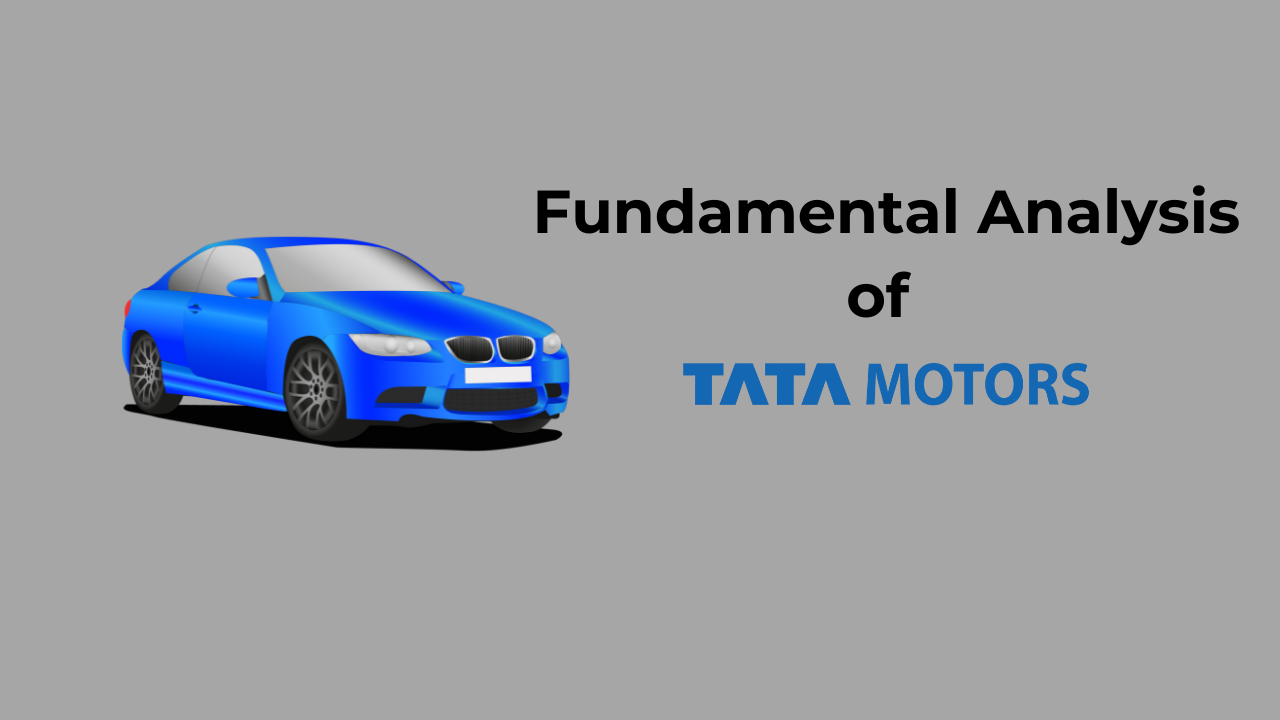Why Stock Market Returns Outperform Most Asset Classes in the Long Run
Should you buy Tata Motors? Take a test drive of its business before you invest!

Last Updated: 14th October 2025 - 12:37 pm
Tata Motors is one of India’s most recognised automobile companies and a key part of the Tata Group. Known for its wide portfolio, the company manufactures passenger cars, electric vehicles, trucks, buses, and defence vehicles. It also owns the luxury brands Jaguar and Land Rover, which give it a strong international presence. Operating in more than 125 countries, Tata Motors plays a central role in India’s automobile sector while competing globally.
Company Overview
Tata Motors was founded in 1945 and has grown into a global automotive manufacturer. The company produces a mix of affordable cars, premium vehicles, and commercial transport solutions. Its strong focus on electric mobility has positioned it as a market leader in India’s electric vehicle (EV) segment. Models like the Nexon EV and Tiago EV have gained popularity among Indian customers, helping the company strengthen its brand in clean energy transportation.
The company continues to explore new technologies, including connected vehicles, alternative fuels, and advanced safety systems. This focus allows Tata Motors to stay aligned with future industry trends.
Fundamentals of Tata Motors
Tata Motors shows a Price-to-Earnings (P/E) ratio of 11.6, which suggests it is reasonably valued in comparison to its peers. Its Price-to-Book (P/B) ratio stands at 2.4, reflecting its asset base. The company reports Earnings Per Share (EPS) of 58.73, a figure that highlights its ability to generate profit per share.
Its dividend yield is 0.9% currently, giving shareholders a small return in the form of dividends. The PEG ratio is at -0.3, indicating growth expectations are inconsistent.
In summary, the fundamentals show a combination of strengths such as healthy EPS and manageable debt, but also areas where consistency needs to improve.
Financial Performance
Tata Motors has posted mixed results over the last few quarters.
- Revenue: In June 2025, the company reported net sales of ₹15,546 crore. This was lower than March 2025, where sales stood at ₹19,869 crore.
- Total Income: Income from operations in June 2025 was ₹15,682 crore, compared with ₹19,999 crore in March 2025.
- Profit Before Tax: The company recorded ₹6,460 crore before tax and exceptional items in June 2025, higher than ₹1,865 crore in March 2025.
- Net Profit: Net profit for June 2025 stood at ₹5,350 crore. This was a significant jump from ₹477 crore in September 2024.
On an annual basis, Tata Motors has reported operating revenue of ₹4,38,935 crore. The company has maintained a pre-tax margin of 8%, which indicates moderate efficiency. The Return on Equity (ROE) is 23%, a strong number that shows effective use of shareholder capital.
The debt-to-equity ratio is at 35%, a level that reflects a stable financial position.
Technical Analysis
From a technical perspective, Tata Motors shares are currently trading near ₹669.
- Moving Averages: The stock is below its 200-day moving average, which signals weakness, but it is close to its 50-day average, showing some stability.
- Support and Resistance: Support levels are at ₹664 and ₹659, while resistance is at ₹677 and ₹685. Sustained moves beyond these levels could set future direction.
- Indicators: The Relative Strength Index (RSI) is at 47.16, showing a neutral zone. The MACD signal is slightly negative at -0.56, pointing to mild bearishness.
The stock has been forming a base on weekly charts. For the near term, price action around moving averages will remain important to watch.
Strengths of Tata Motors
- Strong Brand Portfolio: Tata Motors caters to every segment, from affordable hatchbacks to luxury SUVs.
- Leadership in EVs: The company is the market leader in electric passenger vehicles in India.
- Global Reach: Presence in 125+ countries provides diversified exposure.
- Solid Balance Sheet: A debt-to-equity ratio of 35% signals stability.
- Jaguar Land Rover: Ownership of JLR gives Tata Motors an international edge in premium cars.
Key Challenges
- High Competition: Both Indian and global automakers compete aggressively in the domestic market.
- Raw Material Volatility: Fluctuations in steel, aluminium, and battery prices affect margins.
- Dependence on JLR: A large portion of revenue comes from Jaguar Land Rover, which is sensitive to global economic conditions.
- Weak Technical Position: Trading below 200 DMA shows a lack of short-term strength.
- Global Risks: Slowdowns in Europe or China can influence performance.
Recent Developments
- EV Expansion: Tata Motors has increased production of electric vehicles to meet rising demand.
- Institutional Holdings: Large investors increased their stake in recent quarters, indicating continued confidence.
- Cost Efficiency: The company is focusing on reducing operating expenses and improving productivity.
- Global Partnerships: Collaborations in battery technology and EV infrastructure are shaping future strategies.
Conclusion
Tata Motors remains one of the most important players in the Indian and global automotive industry. Its wide product range, focus on electric mobility, and ownership of Jaguar Land Rover give it both domestic and international strength. Financially, the company has shown improvement in profits and maintains a stable balance sheet with controlled debt.
At the same time, Tata Motors faces challenges such as stiff competition, raw material price volatility, and dependence on global markets. Its technical position suggests consolidation, with the stock trading near key moving averages.
In short, Tata Motors shows a blend of strong fundamentals, robust brand value, and leadership in EVs, balanced by global and market-related challenges.
- Flat ₹20 Brokerage
- Next-gen Trading
- Advanced Charting
- Actionable Ideas
Trending on 5paisa
03
 5paisa Capital Ltd
5paisa Capital Ltd
Indian Stock Market Related Articles
Disclaimer: Investment in securities market are subject to market risks, read all the related documents carefully before investing. For detailed disclaimer please Click here.

 5paisa Capital Ltd
5paisa Capital Ltd



